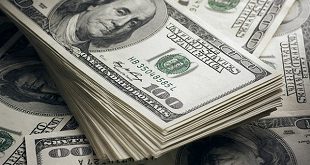
By Andrew M. Mwenda
The financial meltdown in Europe and North America has continued in spite of the large sums of money governments have pumped into the financial markets to prop them up. On October 10th, both the Dow Jones Index in New York and the FTSE in London fell by 7%. For Ugandans, what is this crisis about? What caused it? Who was responsible? Could it have been avoided in time? How different is it from other economic crisis before? What are its likely effects both on the global economy and on Uganda? Is there something that we in Uganda should be afraid of?
The background
The source of the crisis can be traced to the liberalisation of the financial sector beginning during the presidency of Ronald Reagan in the USA and the premiership of Margaret Thatcher in Britain ” what many call the neo-liberal revolution. It then spread to other countries on the globe ” in poor countries largely through Structural Adjustment Programs. Before 1930, Western economies were run on free market principles known as laissez faire i.e. little or no government interference in the operation of markets. This system led to the great depression which began with the collapse of the stock market in New York in 1929.

The lesson learnt from this experience was that governments should intervene in markets to avoid such pitfalls. A consensus in favour of an intrusive state in the economy emerged. Governments began not only to regulate banks, but to own them also. Governments also took over telecommunications, energy etc. That consensus sustained economic growth and low employment in the 1930s, 40s and 50s but began to enter diminishing returns in the 1960s. By the 1970s, sluggish growth and high inflation caused an ideological swing back to liberal ideas of free market competition. Reagan and Thatcher were thus products of this swing rather than the cause.
The 1980s were the period of “rolling back the state.” Public enterprises were privatised, state monopolies disbanded and price controls removed. All this unleashed innovation especially in sectors like telecommunications, ICT and for purposes of this discussion ” in financial markets. The result was high growth rates in the 1990s ” the boom of the Bill Clinton and Tony Blair years. In many ways therefore the success of Clinton and Blair was premised on the reforms of Reagan and Thatcher. But they too recognised the necessity of these reforms and therefore deepened them.
The financial bubble
What were the innovations in financial markets during the 1980s, 90s and the early 2000s that led to the current crisis? Many new financial products came to the market often called derivatives. They included credit default swaps, interest rate swaps, securitisation of credit card debt etc. What are these things anyway? We begin with mortgage backed securities. Let us assume that Barclays Bank has US$ 10m and gives mortgages (loans to buy houses) worth that amount to its customers. In the short run, it will have run out of money to lend to other customers who turn up looking for mortgages. People repay mortgages over a period of 20 years. Barclays would have to wait for many years to collect the money and loan it to other clients.
This shortage in the supply of money was overcome by securitisation of the mortgages. What is this? Barclays would package the mortgages according to the quality of the underlying asset and borrower. For those mortgages where the owners had low risk of defaulting, they were called prime. Those where there was a high risk of default were called sub-prime. The interest rate on each of these products was determined by the underlying risk. Having thus packaged them this way, Barclays would sell them to ” for example ” the East African Development Bank (EADB).
Let us assume that Barclays gave out the mortgages at 10% interest rate per annum. It can sell to EADB at say 8% and promise that it will ” every year ” remit to them that amount. EADB (in the US, this role was largely played by Fannie Mae and Freddie Mac) would then issue a bond (a piece of paper) promising that anyone who buys that paper will earn an interest of say 6% per annum. Pension funds e.g. NSSF hold long term money from their subscribers. They would buy these bonds otherwise called securities from EADB which would in turn guarantee them an annual income of say 6% from their investment every year.
Because Fannie Mae and Freddie Mac had an implicit federal government guarantee, many people thought their bonds to be very safe. In almost all these cases, the securities these two institutions issued were underwritten by prime mortgages.
Barclays has committed to pay 8% interest to EADB every year. If those who took its loans default, it will be exposed i.e. it will not be able to meet its obligation to EADB. To cushion against this, Barclays would now go to a hedge fund ” let us assume Bear Sterns in this case ” and hedge itself against the risk. Bear Sterns would promise to pay the 8% to EADB if Barclays Bank borrowers defaulted.
This fear of exposure was multiplied. EADB also has obligations to those who bought its bonds e.g. NSSF. To cushion against likely default by Barclays, EADB would buy insurance from, let us say, AIG. Bear Sterns knowing the likely risk would also go and re-insure its obligations to AIG. Now you have the entire financial sector locking itself up in many obligations. Initially, this innovation was thought to be a way of spreading risk. Today, with the benefit of hindsight, it shows it was actually concentrating risk: the failure of one would cause the rest to buckle.
Mortgage securitisation itself was not an innovation of the 1990s. It came in the 1930s. Its major result was to increase the supply of mortgage finance ” and Uganda needs to do it yesterday. But the 1990s and early 2000s brought multiple risk insurance platforms that seemed to reduce exposure. Thus you got credit default swaps (where investors buy insurance against corporate default ” they are worth US$ 62 trillion in the US) and interest rate swaps (where one party agrees to exchange a fixed rate obligation with another that has a floating rate exposure). The craze hit the sky with the securitisation of credit card debt.
I was initially enthusiastic about these innovations because they seemed to spread risk across many institutions. I still have a strong fascination with them. They drove the financial sector in the West to unprecedented growth over the last two decades. People working in the sector made fortunes over night as profits soared. By 2006, financial firms represented 25% of total profit in the US ” up from less than 5% in the 1980s. The market for credit default swaps grew from US$ 100 billion in 2000 to US$ 62 trillion in 2008. Only one man saw the danger ” Warren Buffet. He called these derivatives “financial weapons of mass destruction.” A man of incredible foresight, Buffet warned refused to invest in dotcom during their boom. Everyone wrote him off as an outdated old man. He was proved right.
It would be incomplete not to recognise the technological changes that have underpinned this transformation of the financial sector. The introduction of ATMs, trading stocks on the web and internet banking created a non-stop electronic finance network that works 24/7. Its implications are yet to be assessed. Bankers in Singapore would close at 7pm but leave their money to be electronically traded by their counterparts in New York. As New York went to bed, it would leave the money to be traded by Singapore who would now be going to work. The fusion of time differences, electronic money transfers and cross continental trading brought an entirely new dynamic to the financial sector.
The collapse
That a financial crisis in the US was looming was an open secret. The first signs were in the real estate market. Prices of homes soared in America and Britain largely driven by increased supply of mortgages. Annual price increases were about 20%. Developers poured money into the market by putting up more houses. Because of rapid appreciation of home values, individuals began to refinance their mortgages i.e. borrowing against the increased value in their home. Home equity loans became the “in-thing” you could refinance your mortgage and put money into stock. Why was there so much money in the system? The Federal Reserve had been cutting interest rates ” by 2007 down to 1%. Banks therefore had too much liquidity and were under pressure to find clients to lend. This meant they had to reduce their risk assessment. Those who didn’t missed the opportunity. Consequently, even people who would under normal circumstances not qualify for home loans were getting them.
I am suspicious that banks did this because they expected home prices to go up forever. Assume someone bought a house at US$ 100,000 at an interest rate of 3% per year. Let us also assume that they expect prices to increase by 20% per year. In this case, if someone defaulted for two years, the value of the house would be US$ 144,000 (a capital gain of US$ 44,000) yet the accrued interest on the loan would US$ 7,000. The bank would auction it at a handsome return.
The US has rating companies that tell investors and firms how risky or not a given product or company is. I know only three rating companies in the US; S&P, Moody’s and Fitch. The structure of incentives of these companies lends itself to abuse. Corporations hire rating companies to rate them. Of course every corporation would want to be rated. Now let us assume that Fitch rated Lehman Brothers but S&P was very strict and rated them at only A. Of course, the incentive of Lehman brothers would be to shift business from S&P to Fitch. One can argue that these rating companies rely on reputation and therefore cannot overstate the rating they give a given company even if it is paying them for it. But this assumption is illusory because of the oligopolistic nature of the industry, and also because there can be a million justifications for either a good or a bad rating. Many companies along with the instruments they had issued have been found to have been wanting. Did the rating companies not see how highly leveraged and risky these financial instruments were? Most unlikely and only partly! My suspicion is that in the competition for clients, rating companies found themselves compromised. Their earnings came from getting more clients, not less. It is this later factor that justifies regulation. One often-advanced reason has been that the free marketers refused calls for regulation from an ideological point of view, arguing that competition was a better regulator. This is only partly true. The fundamental issue is that it is difficult to organise a consensus on regulation during a boom because no one wants to end the party. Now that there has been a crash, regulation will be easy to sell politically. This possibly justifies Allan Greenspan’s argument against trying to fix markets that have not yet crashed.
How unique?
There will always be a crash after a boom. The challenge is how to mitigate its effects and how to clean up the mess it leaves in its wake. The cyclical growth of capitalism was initially identified by classical economists like Adam Smith, John Stuart Mill, David Ricardo and Karl Marx. The economist who gave it the most robust expression was Joseph Schumpeter in his famous phrase ” “the gale of creative destruction.”
For Schumpeter, every innovation drives profits in an industry, thus attracting a swarm of imitators. Initially, these profits and the entry of imitators create a boom until prices reach a level that is economically unsustainable. This lays the ground for a burst as competition drives prices down. Profits plummet, leading to losses everywhere. Schumpeter, like Marx, saw this as the way the capitalist beast works, not the way it fails. The collapse creates space for renewal by killing enterprises with old technologies and old organisational forms ” thus paving way for the emergence of new and reconstituted firms that will bring new innovation into life.
For every collapse, there is always a fall guy. In this case, it is President George Bush and the Republicans and/or the corporate leaders who presided over the collapse of enterprises. Government policies have powerful implications on how markets work. But governments are not omnipotent and omnipresent in the life of markets. That is why Britain under New Labour and Europe largely under the control of left-leaning parties are both almost in the same boat as the US under Bush.
Individuals also accentuate the crisis through greed and/or stupidity. From the early 1990s when all these new financial products reared their ugly head, the economic boom in the West was clearly driven by increasing debt on the part of both consumers and firms. The longer such a debt fuelled boom lasted, the greater would be the disaster when finally the edifice unravelled. Didn’t these corporate executives see the crisis on the horizon? The structure of incentives favoured ignoring the red lights. Why?
Some banks were raking in huge profits from clearly risky lending. Yet the day of reckoning was not coming. If you tried to be prudent, you lost market share. CEOs and other executives don’t get rewarded for losing market share in the name of some uncertain future. They get fired. In such circumstances, risky lending crowds out un-risky lending. It is called the “herd mentality” ” when one antelope in a herd runs, all others follow suit. If there is a lion, the one that didn’t will be eaten. Yet if there was no lion, the antelope can come back later and eat the grass. The lesson: it is always better to join the crowd.
Although details of any crash differ, the broad outlines of how it unfolds have remained largely the same for over four hundred years. In all cases, some economic variable e.g. the price of houses, or stocks or a currency reaches a level that is economically unsustainable. Many people may notice this, many don’t. Even those who notice think they will be jump off before the train hits a steel wall. When the time comes, few succeed. Remember that a speculative bubble is most profitable when it is about to burst.
Finally, the day of reckoning comes. Prices fall. What were good loans become bad loans, adequate collateral becomes inadequate collateral. What was a good balance sheet becomes a bad balance sheet. This sets in motion a panic. Loans that are not adequately collateralised get called. Fearful of default themselves or short of liquidity, banks don’t renew short term loans that would in normal circumstances get automatically rolled over. Credit markets freeze up. Suppliers, afraid that they would not be paid insist on cash before delivery. Working capital dries up. A healthy company becomes an unhealthy company. What then are the implications for the global economy and for Uganda?
Continues next week.
 The Independent Uganda: You get the Truth we Pay the Price
The Independent Uganda: You get the Truth we Pay the Price



